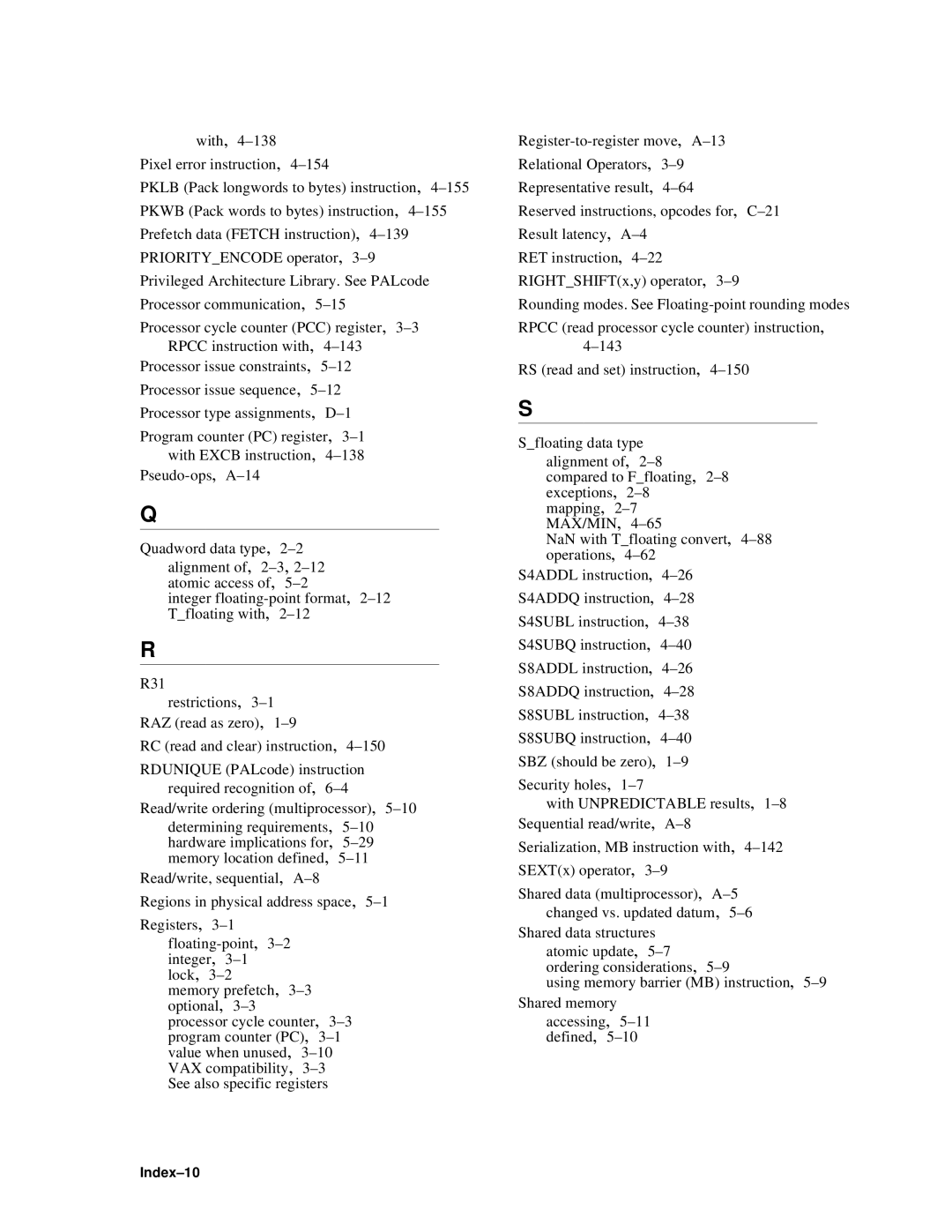
with,
Pixel error instruction,
PKLB (Pack longwords to bytes) instruction,
Privileged Architecture Library. See PALcode Processor communication,
Processor cycle counter (PCC) register,
Processor issue constraints,
Program counter (PC) register,
Q
Quadword data type,
alignment of,
integer
R
R31
restrictions,
RC (read and clear) instruction,
RDUNIQUE (PALcode) instruction required recognition of,
Read/write ordering (multiprocessor),
determining requirements,
Read/write, sequential,
Regions in physical address space,
Registers,
memory prefetch,
processor cycle counter,
Relational Operators,
Representative result,
Reserved instructions, opcodes for,
RET instruction,
RIGHT_SHIFT(x,y) operator,
Rounding modes. See
RPCC (read processor cycle counter) instruction,
RS (read and set) instruction,
S
S_floating data type
alignment of,
NaN with T_floating convert,
S4ADDL instruction,
Security holes,
with UNPREDICTABLE results,
Shared data (multiprocessor),
Shared data structures
atomic update,
ordering considerations,
using memory barrier (MB) instruction,
accessing,
